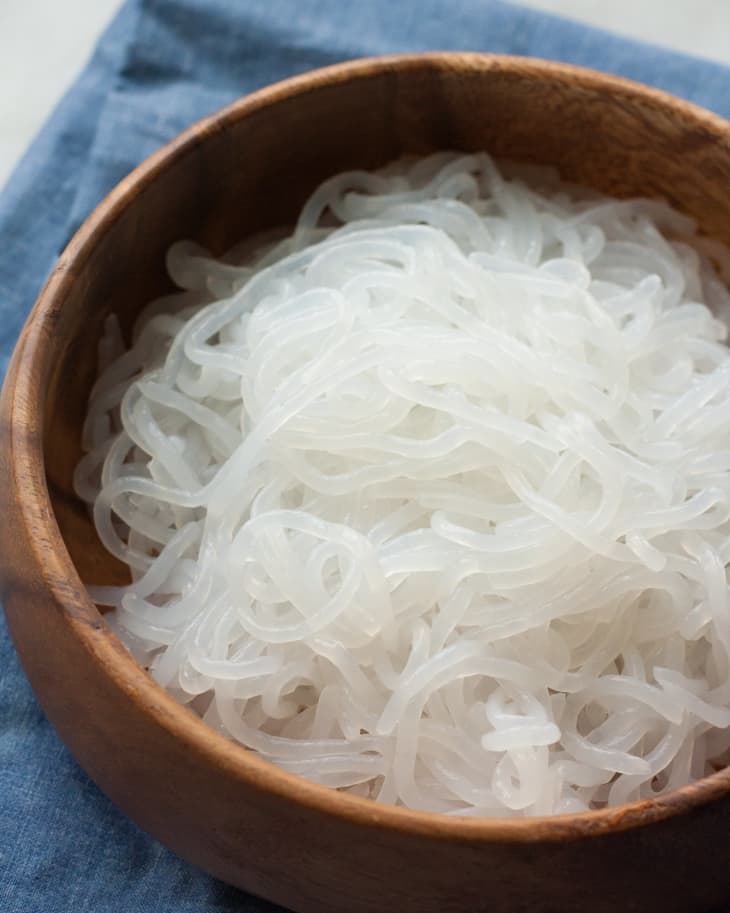Why It’s Worth Getting to Know Gluten-Free, Low-Calorie Shirataki Noodles
A few years ago, a friend talked about some kind of zero-calorie noodle she had just discovered. “Zero calories?” I scoffed. I thought that such a thing wouldn’t be tasty or worth my time, but I picked some up recently and was converted.
Traditional shirataki noodles are pretty much the perfect food for those who may have food allergies or are on special diets; they’re vegan, gluten-free, and keto-friendly. They naturally don’t contain any calories because the glucomannan starch they’re made of is an indigestible dietary fiber and also contains no carbohydrates.
Shirataki noodles are great everyday noodles, and you should give them a try, too! Here’s what you need to know about cooking and eating shirataki noodles.
What Are Shirataki Noodles Made Of?
Shirataki noodles come from a yam-like tuber called Devil’s Tongue. Glucomannan starch is extracted from the tubers, then mixed with water and limewater to turn it into a substance called konnyaku. Konnyaku is then shredded into traditional shirataki noodles.
Sometimes other ingredients are added into shirataki noodles, like soy, and you’ll see them labeled tofu or with other flavors. Tofu shirataki noodles will have a few calories in them, due to the addition of soy.
Where Can I Buy Shirataki Noodles, and What Do They Taste Like?
Shirataki noodles can be found both dry and soft (cooked). The cooked shirataki noodles are easier to find and are thin, translucent, and have a gelatinous texture. The noodles have no real flavor but absorb flavors instead.
The soft shirataki noodles, packed in liquid, are usually sold in the refrigerator case with the tofu at the grocery store. As they’ve become more and more popular over the years, I’ve even found them at big chain grocery stores, like Safeway.
Cooking with Shirataki Noodles
The prepared shirataki noodles can be eaten as is, but the package advises draining, rinsing, and even boiling them for a few minutes if you don’t like the flavor of the liquid they’re packed in.
Shirataki noodles can be thrown into cold noodle salads or cooked in hot broth. Since they inherently have very little flavor, I like to pair them with bold flavors like peanut-chile sauces or tossing them into a strong broth, like miso soup.
The fact that you don’t have to precook them and they are lighter than wheat or rice noodles makes them a great candidate for summer cold noodle salads. Shirataki noodles also don’t get gummier as they sit, which is an added bonus.
These noodles are great for those looking for an alternative to traditional wheat or rice noodles, and while the fact they contain zero (or minimal) calories is also great, shirataki’s versatility and texture is what won me over!
